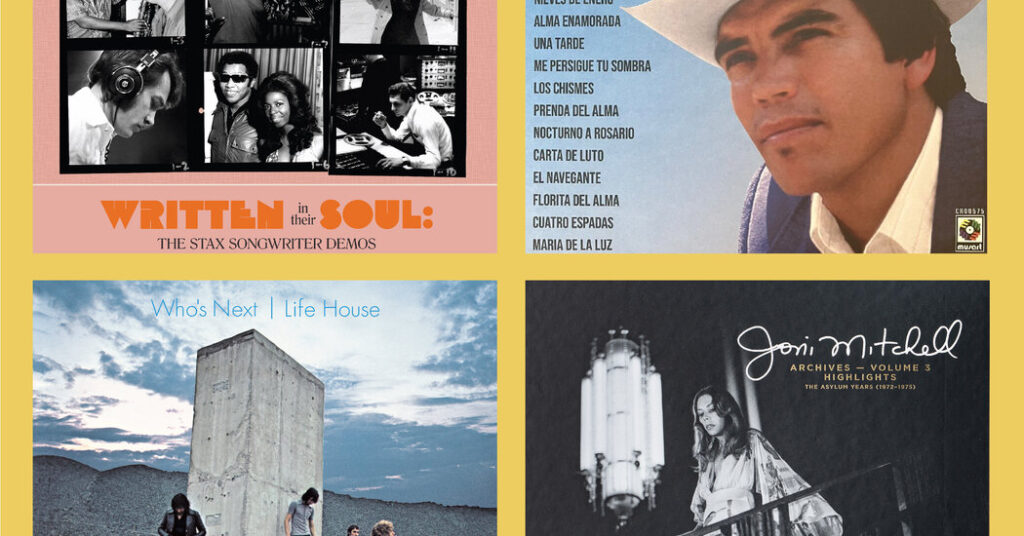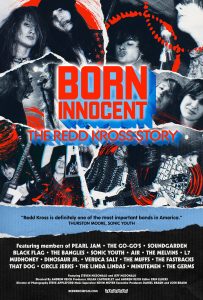12 Key Music Collections, From Future to the Who

This monumental collection — 534 well-chosen songs with an encyclopedic book — covers more than half a century of blues recorded in Memphis, with performers both well-known (B.B. King, Furry Lewis, Memphis Minnie, Elvis Presley, Ike and Tina Turner) and barely remembered. There were some constants through the decades: songs about loving, cheating, drinking, hard work and hard times. But the set also chronicles a genre solidifying and defining itself, as the variety of the 1920s and 1930s — with jug bands, string bands, jazz combos, barrelhouse piano, kazoos and clarinets — narrows into guitar-centered 12-bar shuffles and boogies, all sung with striking voices and wry resilience. PARELES
Various Artists, ‘Tribal Rites of the New Saturday Night: Brooklyn Disco 1974-5’
(Ace; one CD, $15; two LPs, $34)
Tony Manero would have never sashayed his way through Bay Ridge in “Saturday Night Fever” without the highly theatrical, occasionally lurid 1976 New York magazine article, written by Nik Cohn, about the emergent proto-disco nightclubs in Brooklyn. This compilation (which shares its name with that article) is an approximation of what was playing in those outer-borough rooms — highly sensual, up-tempo soul music pulsing with lustrous string sections and singing that blended ache with pride. “After You’ve Had Your Fling (Get Down to the Real Thing),” by the Intrepids, begins as a taunt and ends in a pool of ecstasy. “Wake Up Everybody,” by Harold Melvin & the Blue Notes, is dynamic but not quite explosive, regal but not quite rocking. In total, these songs capture a moment before the disco sound coalesced into something shimmery and a touch saccharine, underscoring its foundation as thrilling, swelling music to sweat to. (Brief excerpts from Cohn’s article are sprinkled throughout the liner notes, but a full reprint would have been welcome, even though the copy concedes the piece “was sold as fact but was fictional.”) CARAMANICA
Various Artists, ‘Written in Their Soul: The Stax Songwriter Demos’
(Craft; seven CDs, $90; digital download, $70)
Songs have to start somewhere. East/Memphis Music, the publishing arm of Stax Records, kept copies of hundreds of demos from the 1960s and 1970s: solo home recordings and tracks roughed out with Stax studio stalwarts, hi-fi and lo-fi, chosen to become singles or left on the shelf. This set gathers 146 of them: some that clearly mapped the finished versions, some that would be recast and some that hold tantalizing unrealized possibilities. It’s a chance to hear the voices of songwriters who largely stayed behind the scenes, like Bettye Crutcher, Homer Banks and Max Rice. It’s also a tribute to the Stax studio teamwork that would go on to punch up these demos into finished songs. PARELES
War, ‘The World Is a Ghetto: 50th Anniversary Collector’s Edition — The Complete Sessions’
(Rhino; five LPs, $125)
The long-running Los Angeles band War came up with hybrid grooves — funk-Latin-blues-rock-gospel-reggae-soul — that sounded as casual as block-party jam sessions. But they weren’t. War’s 1972 album, “The World Is a Ghetto,” went to No. 1 with hits built on those grooves, including “Low Rider” and “The Cisco Kid.” The expanded reissue includes an LP of outtakes and, for each of its six songs, a 25-minute montage of session material. The songs take shape as the band chooses sounds, toys with riffs and rhythms, reworks lyrics and tightens up every syncopation; they’re jovial, but they’re doing the work. PARELES
The Who, ‘Who’s Next/Life House’
(Geffen; 10 CDs, 1 Blu-ray audio, 100-page hardcover book, $300)
Pete Townshend had vast ambitions for the Who’s studio follow-up to the rock opera “Tommy,” but cooler heads prevailed and it was cut back to a concept-free single album: “Who’s Next,” a pinnacle of the band’s career. In 1970, long before the internet, Townshend envisioned “Life House” as a high-tech parable about ecological disaster, tyranny, virtual entertainment and the healing communal power of live rock music, which he wanted to generate with crowdsourced information from concert workshops. He also leaped into early synthesizer technology. Townshend never quite let go of “Life House”; he has released parts of it on solo collections, and this year he also collaborated on turning its story into a graphic novel. This exhaustive boxed set unites “Who’s Next” with the whole painstaking process before it: demos, instrumentals, discarded songs with elements that would resurface elsewhere, variations and ferocious live workshop concerts at small theaters, along with spatialized Blu-ray remixes. It’s a deep dive into Townshend’s intense, convoluted creative efforts. The extended instrumental versions of the electronics-driven “Baba O’Riley” are spectacular; so is the live, muscular and metaphysical “Time Is Passing.” PARELES





